ONLINE NEWS: MICROPLASTICS: BECOMING ONE WITH TRASH
Bernama BI
MICROPLASTICS: BECOMING ONE WITH TRASH
By Nina Muslim & Amirul Sajadi | 30 November 2023
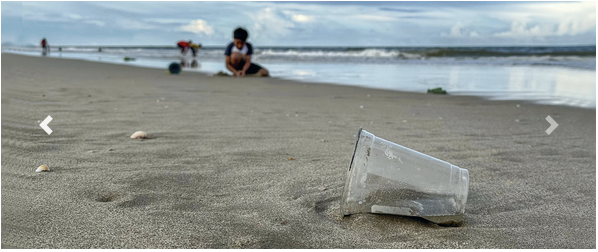
Engorged with recent rainfall, the waters of Selangor River by the dam in Kuala Kubu Bharu, Selangor, moved fast, almost at the same height of the riverbank. Its waters lapped steadily at the muddy and very soft riverbank.
Balancing precariously next to a wired fence, Saraswathy Nalatambi, who is pursuing a PhD in sustainable development at Sunway University, held tight to the bright orange rope before tossing the metal pail attached to it into the river.
One misstep and she would likely fall into the river. Despite not being able to swim, she was intent on scooping up the upper layer of river water. She has been going to 22 spots along the Selangor River for the past few months to collect samples.
When she is not scooping up water from the river, she is in the laboratory dissecting fish and cockles and dissolving their flesh. She filters all her samples through a fine sieve in the hope of finding microplastics.
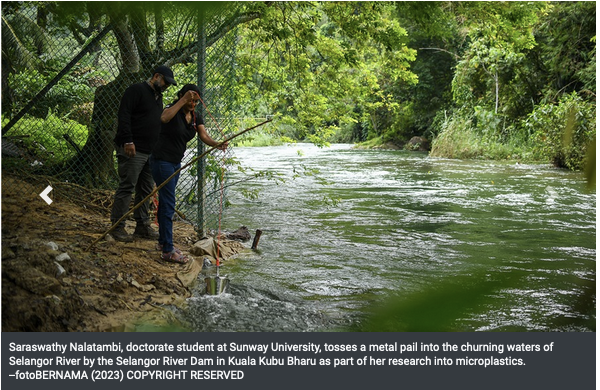
Microplastics, tiny pieces of plastic measuring less than five millimetres in diameter that can barely be seen with the naked eye, are everywhere. Researchers have found them in the clouds and in the deepest parts of the ocean.
Saraswathy wants to know how pervasive the microplastics are and whether human activity has any effect on the amount. Looking through the microscope in her lab, she pointed out the pieces of microplastics found in the sample on the screen.
"This is fish tissue. The muscles. This is what is going into human consumption" she told Bernama.
That she found microplastics in marine animals or in the river is not odd. What is concerning is that research has shown these microplastics can affect animal behaviour and shorten their lives - which does beg the question of whether humans are similarly affected.
Although data is currently inconclusive, scientists are nevertheless sounding the alarm, expecting a link between illnesses and microplastics to be established within the next few years.
MICROPLASTICS ARE IN US
Microplastics are tiny pieces of plastic, which itself is made from fossil fuels. The creation of plastic has been revolutionary, transforming the way we live as it is easy to produce and is lightweight, waterproof and durable. It is also practically immortal, taking hundreds to thousands of years to break down.
That longevity is now creating problems for the world.
According to the Organisation for Economic Cooperation and Development, 6.1 million tonnes of plastic waste leaked into aquatic environments and 1.7 million tones went into oceans in 2019. A 2021 study by Meijer et al. lists Malaysia as the second biggest contributor to ocean plastic pollution although the findings are disputed. Figures from Solid Waste and Public Cleansing Management Corporation (SWCorp) showed some 101,949 tones or 13 percent of trash generated by Kuala Lumpur and Putraiava residents in 2021 comprised plastic waste. In total, the residents generated 772,349 tonnes of waste that year.
The plastic waste breaks down into microplastics or nanoplastics, which are even tinier specks of plastics, categorised as secondary particles. Primary plastics are tiny particles usually manufactured for domestic use such as "beads that we use in facial cleansers and toothpaste" said Prof Dr Yusof Shuaib Ibrahim, a marine biologist at Universiti Malaysia Terengganu.
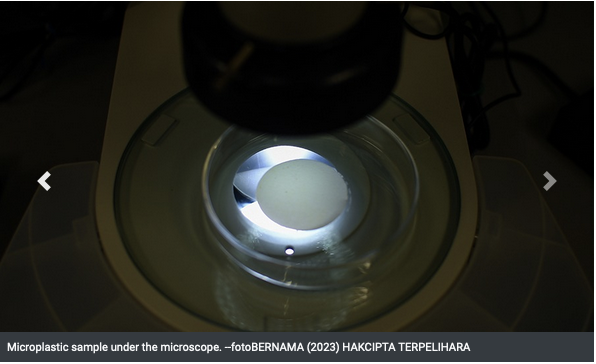
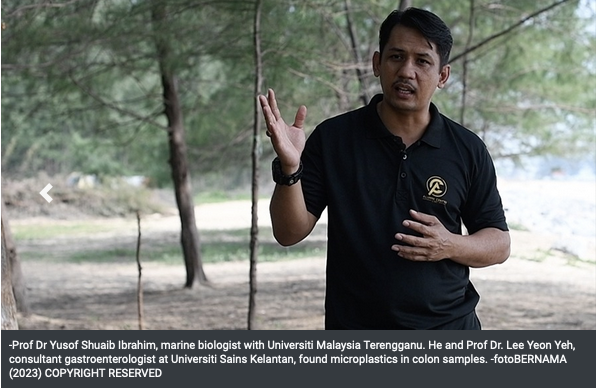
Like the ecosystem where plastics have become ubiquitous, so have microplastics in the human body. Studies have found microplastics in the lungs, heart and placenta, among others.
In a study published in a journal by the American Chemical Society, scientists from Canada estimated that humans consume between 39,000 and 52,000 microplastic particles per year depending on their age and gender. They said people who drink their recommended amount of water through only bottled sources may be ingesting an additional 90,000 microplastics annually, compared to 4,000 microplastics for those who consume only tap water. They also said these numbers were likely undercounts.
"Microplastics are everywhere. We're breathing it in every day because it is in the air. It's in the water that we drink," said Prof Ting Kang Nee, a pharmacologist at the University of Nottingham Malaysia.
Universiti Sains Malaysia Kelantan consultant gastroenterologist Prof Dr Lee Yeong Yeh found out for himself how pervasive microplastics were.
In 2017, Prof Yusof, who was a patient of Dr Lee, asked him if he saw any microplastics in his (Yusof's) body during a check-up. Dr Lee could not see any but wondered if they were there, undetected by the naked eye.
He and Yusof then began a study, testing 11 colon surgical specimens from patients for microplastics. All the samples except two were from cancer patients.
"To our surprise, and to some extent - not to say - horror, we found microplastics in all the specimens we collected," Dr Lee said, adding the study did not prove a link between cancer and microplastics.
He said they were now trying to find the origin of the microplastics in the bowels, whether it was from food or water, and what exposure to microplastics did to the human body.
Yusof said it would be very easy to get microplastics from seafood, describing it as "worrying" if this continued.
"Imagine if organisms like cockles or fish and others eat microplastics. For seafood lovers, we would be eating the cockles directly," he said.
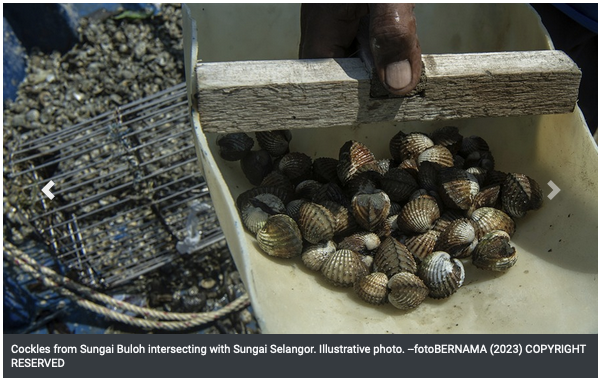
DANGER TO THE WORLD AND HUMANS
In animals, studies have shown microplastics affected their fertility and slowed their development. In a study published in the November 2023 edition of Neuro Toxicology, A. Sharma et al. reported that nanoparticles of polystyrene are capable of passing through the blood-brain barrier in mice, causing learning disabilities and anxiety.
In seabirds, they caused a new disease called plasticosis, where scar tissue in the digestive systems, caused by ingestion of plastic particles, caused them to be more prone to infections and to die sooner.
Other than its health effects on animals, Yusof told Bernama another danger is that animals may consume microplastics thinking it is food like plankton and feel full despite not getting enough nutrition.
"When they feel full (from eating microplastics), it can cause inflammation and other effects and even death" he said.
In humans, however, the effects are still a mystery as there are limits to the research. Scientists cannot feed human test subjects plastic to see how it affects their health, for instance.
Of course, there is a possibility that humans will be perfectly fine carrying fragments of plastic inside their bodies - from plastic water bottles, cosmetic cleansing beads or plastic detergent bottles, for example - but scientists consider it unlikely.
"Microplastics (are) dangerous because it's man-made. The origin is plastic. They stay longer in our body and they do what? We don't know," said Saraswathy, who is also an assistant professor at the Heriot-Watt Global College Malaysia.
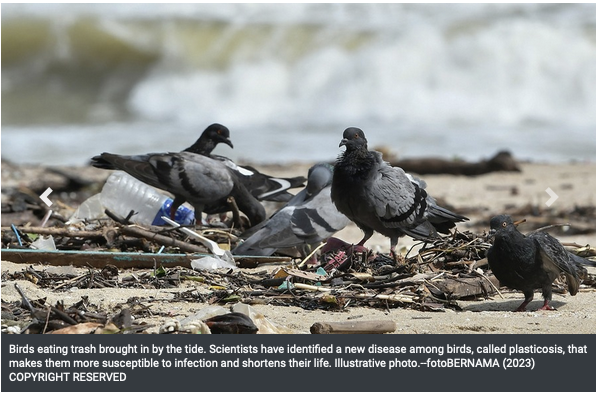
Given the toxic effects of plastic on the environment caused by leachate - contaminated liquid from plastic - and cancer-causing gasses from burning plastic, it would not be surprising if those effects were present within the human body.
Ting, who is also head of the School of Pharmacy at the University of Nottingham Malaysia, told Bernama it was likely that humans would have the same inflammatory reaction to microplastics in their bodies as in animals.
"I think in all the postulations by scientists, the foreign particles in our body will induce inflammation and this inflammation will lead to scarring and changes in the morphology (structure)," she said via Zoom.
In 2022, E. Danopoulos et al. reported in the Journal of Hazardous Materials that microplastics caused damage to human cells in a lab, ranging from allergic reactions to cell death. Another study published in 2021 by Z. Yan in the Environmental Science and Technology journal found higher quantities of microplastics in the faces of people with Irritable Bowel Syndrome although a causal link was not established.
WAYS TO DEAL
All the scientists agreed that mitigation has to begin now even though a definitive link between microplastics and illnesses may not be established until possibly 10 years later. There needs to be changes in policy and at the societal level in the meantime
"If I'm correct (that human activity increases the amount of microplastics in the site), it means we have to work on the waste management system and then we have to improvise ... human behaviour," Saraswathy said.
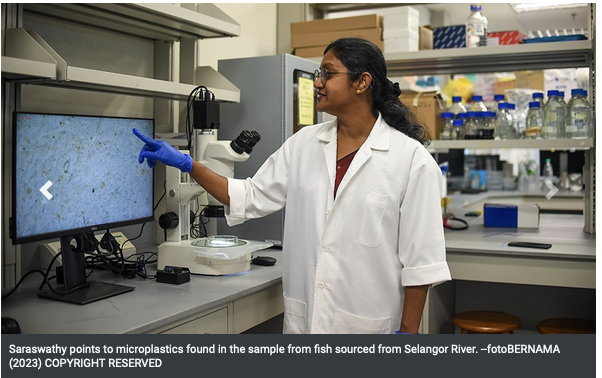
Although experts say policy changes are headed in the right direction with the government focusing on eliminating single-use plastics by 2030, changing mindsets is easier said than done. Plastic is convenient, cheap to produce and adaptable to one's needs. Recycling plastic has failed, with the national recycling rate standing at about 33 percent in 2022, below the 40 percent target by 2025.
Ting said although "it is already too late" to worry about plastic's proliferation, she added it did not mean there is nothing that can be done to mitigate its effects.
"(People) need to think of ways to change their behaviours to reduce the use of single-use plastics, to start with. And the messaging is important .. so we can think of our behaviour" she said, suggesting changing plastic items to ones made of biodegradable materials.
Environmentalists have long said recycling should be the last point in Malaysia's waste strategy. The focus should instead be on reducing and reusing and having people adopt a zero-waste lifestyle as much as they can. It is an option that has been growing in Malaysia in recent years.
(This is the first of a three-part series on plastics and how to live with and without them.)
- Created on .
- Hits: 182
